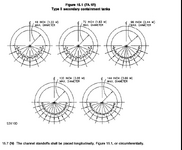Jay_
Mechanical
- Feb 20, 2019
- 103
Dear All,
UL 58 mentions the below,
"3.1 For the purpose of this standard, the following definitions apply.
3.2 TYPE I TANK – A primary tank wrapped by an exterior steel shell that is in direct contact with the primary
tank; where, the exterior shell is wrapped from 300 to 360 degrees of the primary tank circumference.
3.3 TYPE II TANK – An outer tank physically separated from the inner primary containment tank by standoffs;
where, the inner tank is completely contained within the outer tank."
Now, for tank type, means there should be no interstitial space?
UL 58 mentions the below,
"3.1 For the purpose of this standard, the following definitions apply.
3.2 TYPE I TANK – A primary tank wrapped by an exterior steel shell that is in direct contact with the primary
tank; where, the exterior shell is wrapped from 300 to 360 degrees of the primary tank circumference.
3.3 TYPE II TANK – An outer tank physically separated from the inner primary containment tank by standoffs;
where, the inner tank is completely contained within the outer tank."
Now, for tank type, means there should be no interstitial space?

